Here is the essence of my invention:
Knight went on again. 'I'm a great hand at inventing things. Now, I daresay you noticed, that last time you picked me up, that I was looking rather thoughtful?'End of the comic part.
'You were a little grave,' said Alice.
'Well, just then I was inventing a new way of getting over a gate - would you like to hear it?'
'Very much indeed,' Alice said politely.
'I'll tell you how I came to think of it,' said the Knight.
'You see, I said to myself, "The only difficulty is with the feet: the head is high enough already." Now, first I put my head on the top of the gate - then I stand on my head - then the feet are high enough, you see - then I'm over, you see.'
'Yes, I suppose you'd be over when that was done,'
Alice said thoughtfully: 'but don't you think it would be rather hard?'
'I haven't tried it yet,' the Knight said, gravely: 'so I can't tell for certain - but I'm afraid it would be a little hard.' [LC]
Now the long version. In everyday life we often meet cases to which we attribute the term miracle. Like it is discussed here: Visions of the 9/11 Attack
'Miracles' are not recognized by official science. Nevertheless there exists a domain of research, closed to the boundary of official science, that deals with similar phenomena. It's name is parapsychology.
Let us therefore take, as a starting point, a paper recently accepted for publication in a peer-reviewed professional journal, the Journal of Personality and Social Psychology, "Feeling the Future: Experimental Evidence for Anomalous Retroactive Influences on Cognition and Affect". The author of this paper, Daryl J. Bem, is a professor emeritus at Cornell University. From his CV we learn that he first earned his MA in physics, then started graduate studies at MIT, but later followed his other calling and earned a PhD in social psychology. He retired from his position at Cornell in 2007.
[Note: The fact that the author of the paper is a professor emeritus provokes derisory smiles on the faces of those who have not yet retired. That tells us only about the owners of these faces and nothing about the value of the paper. Nevertheless a derisory smile excludes an objective judgment. I will add more: today, when a large part of research depends on the patronage of the employer, it is only in retirement that a scientist can busy him or herself with problems that he/she always, perhaps secretly, considered important. When we are on a payroll, then, for us and for our families, what is important for our employer is important for us. For the employer, on the other hand, 'important' is that what is important for politicians and funding institutions. We could follow this line farther, but there seems to be no end.]
Dr. Bem's publication deals with parapsychology - a controversial domain whose very name is greeted with the condescending, knowing nod and smile from the majority of representatives of 'main stream science'. The very fact that the paper has been accepted for publication does not necessarily mean that it will get published. Unsurprisingly, the attacks have already begun, there is probably also some pressure on the editorial board. Here is an example of a counter-offensive:
"Why Psychologists Must Change the Way They Analyze Their Data: The Case of Psi"The authors of this paper state that they do not attack the very subject of Bem's paper, but merely question the statistical methods used in psychology.
Eric-Jan Wagenmakers, Ruud Wetzels, Denny Borsboom, & Han van der Maas
University of Amsterdam
Wagenmakers himself is a psychologist, Ruud Wetzels is his PhD student, Denny Borsboom has a PhD in psychology, and Han L. J. Van der Maas is a professor and the Head of Psychological Methods at the University of Amsterdam. These scientists certainly represent what is called 'healthy science'. But, since these people do not attack the phenomenon itself, we can tentatively assume that Daryl Bem is on to something, that his research indeed indicates the existence of the phenomenon, but that he has not been able to present his work in a form that would satisfy all. In fact, in his paper, he is explicit about why he has chosen this rather than another methodology. More sophisticated methods (Bayesian etc.) do not always help, and sometimes they obfuscate the picture. Surely as an experienced psychologist he knows what he is talking about.
I am not going to enter into the technical details of the several experiments described in the paper, neither will I discuss the rather standard statistical evaluation methods used. That is not so important here. The paper has been accepted for publication in a peer-reviewed journal, it certainly passed through the hands of some referees and there was a counter-attack that did not question the conclusions but only the methods used for drawing these conclusions. Moreover, since it is not the first paper reporting similar findings - there were many papers published on this subject in the past, with similar conclusions - I will therefore take it as a working hypothesis that the effect described by Bem is real. But what kind of an effect is it?
The effect consists simply of having a valid premonition about an event that is soon going to happen. And what is going to happen depends on random number generators. In the experiment, two kinds of random number generators were used: good software-based pseudo-random generators and hardware generators based on physical phenomena considered as random. On one of the blogs hosted on the Psychology Today web site, we can find an entry entitled: "Have Scientists Finally Discovered Evidence for Psychic Phenomena".
The owner of this blog and the author of the charming entry is Melissa Burkley, PhD in psychology from Oklahoma State University. Dr Burkley concludes that the effect, even though statistically small, is as large as, or larger than the link, widely accepted by mainstream medicine, between aspirin and heart attack prevention, and the correlation, widely propagated in the media, between second hand smoke and lung cancer. Dr Burkley ends with an interesting remark. She writes:
"So although humans perceive time as linear, it doesn't necessarily mean it is so. And as good scientists, we shouldn't let our preconceived beliefs and biases influence what we study, even if these preconceived beliefs reflect our basic assumptions about how time and space work."I will not try to hide the fact that I like Dr Burkley for these statements.
So, what's the real deal with time and space? The author of the paper, prof. Daryl Bem, devotes several pages to this problem. At the end he comes to the conclusion that physics has little to say about this matter. The fundamental laws of physics are time-symmetric and they do not give any reason why the future should be different from the past. "But wait!" I hear you say. "This is not the way I perceive time!". The problem of the arrow of time has been discussed by physicists and by philosophers throughout the ages without coming to any definite and generally satisfying conclusion. At the end the author quotes Richard Feynman with his famous line: "Do not keep saying to yourself, if you can possibly avoid it, 'But how can it be like that?' Because you will go 'down the drain,' into a blind alley from which nobody has yet escaped. Nobody knows how it can be like that."
But I do know how it can be like, and I want to share this knowledge. The whole thing is pretty simple. It is enough to look at modern physics and use its tools. In other words: I have a theory. Perhaps one day someone will be interested in this theory. Or maybe not. In any case I know it, but I am not going to pause at this place as there are problems more important than precognition that need to be solved. Technologically speaking, the way to some practical application is so long that it is more effective not to use any theory at all. Nevertheless I am going to explain the main idea, because the theory allows us to answer the question "But can it be like that?"
The whole secret is contained in my published paper "The Theory of Kairons" [AJ]. Few people know that Kairos is one of the gods of time. That is where the name comes from. Sometimes I like to play with things that are timeless.
In my theory of kairons I have introduced a new kind of physical object. While particles propagate along time-like trajectories in space, my kairons propagate along space-like trajectories in time.
So, they are propagating instantaneously, but they are not tachions. They are rather like shock waves with some quantum character - more like cracks in the fabric of time and space. Using them, as well as some kind of a quantum entanglement, we can communicate with ourselves in the future. There is, however, one condition: a 'friendly retransmitter' is needed, ideally somewhere far away, the distance is not an obstacle, it can be in some distant constellation. It can be somewhere near 3C 144 in the Crab nebula, or it can be 3C 461. What is important is that there should be a strong radio-source there that works in an appropriate nonequilibrium regime (right now received as a strong radio-source). 'We in the future' and 'we in the now' can become quantum-entangled with the retransmitter, the transmission is 'instantaneous', and we receive the signal as 'us in the future'. That's all. The math is rather advanced, therefore no one, even a crippled dog, till now, has paid any attention to it. And if he has, perhaps he is not that crippled.
I am speculating that if the retransmitter is at the distance of x light years, reliable communication may take place with 'us in the future' at the time distance of x/137 years. The Sun is the strongest radio source, but the Sun does not have the supernova history, therefore its transmission regime is different, the noise is also probably rather high. The Sun is circa. 8 light minutes from us. Therefore using the Sun would give us about 3 seconds of advance. That is enough for explaining Dr. Bem's data.
Here is the picture illustrating my hypothesis:
And here are the maps of known radio-sources:
About psychology
On the subject of psychology, psychologists and the methods used by them, a PhD thesis can be written in the domain of satire. Tomasz Witkowski, also a psychologist, is the author of a version of the Sokal affair. For fun he wrote, using a pseudo name, a 'scientific paper' on the subject of 'morphogenetic fields' and their possible use in psychology. Details can be found on Witkowski's site (English version). The result was that a respected journal readily accepted the paper, but when word got out that the paper was poking fun, a 'war' started that included attempts to remove all traces of the 'scandal', including attempts to edit Wikipedia's entries. Not a pretty picture.
Back to physics
Returning to physics I would like to give a hint about other physicists researching the subject of a 'super-luminal communication'. In a paper Subquantum Information and Computation Dr Antony Valentini (Theoretical Physics Group, Blackett Laboratory, Imperial College, London, England) writes in this abstract:
"It is argued that immense physical resources - for non-local communication, espionage, and exponentially-fast computation - are hidden from us by quantum noise, and that this noise is not fundamental but merely a property of an equilibrium state in which the universe happens to be at the present time. It is suggested that 'non-quantum' or non-equilibrium matter might exist today in the form of relic particles from the early universe. We describe how such matter could be detected and put to practical use. Non-equilibrium matter could be used to send instantaneous signals, to violate the uncertainty principle, to distinguish non-orthogonal quantum states without disturbing them, to eavesdrop on quantum key distribution, and to outpace quantum computation (solving NP-complete problems in polynomial time).And here is an interesting poster from Cambridge University (UK):
Postface
Like Dr. Daryl J. Bem, the author of the paper "Feeling the Future", I will also end with a quotation from Lewis Carroll's Through the Looking Glass:
"'I can't believe THAT!' said Alice.Note:
'Can't you?' the Queen said in a pitying tone. 'Try again: draw a long breath, and shut your eyes.'
Alice laughed. 'There's no use trying,' she said: 'one can't believe impossible things.'
'I daresay you haven't had much practice,' said the Queen. 'When I was your age, I always did it for half-an hour a day. Why, sometimes I've believed as many as six impossible things before breakfast."
[Wikipedia]: Charles Lutwidge Dodgson; 27 January 1832 - 14 January 1898), better known by the pseudonym Lewis Carroll, was an English author, mathematician, logician, Anglican deacon and photographer. His most famous writings are Alice's Adventures in Wonderland and its sequel Through the Looking-Glass, as well as the poems The Hunting of the Snark and Jabberwocky, all examples of the genre of literary nonsense. He is noted for his facility at word play, logic, and fantasy, and there are societies dedicated to the enjoyment and promotion of his works and the investigation of his life in many parts of the world, including the United Kingdom, Japan, the United States, and New Zealand.
Literature:
[LC] Lewis Carroll, Through the Loking Glass
[JB] Daryl J. Bem, Feeling the Future: Experimental Evidence for Anomalous Retroactive Influences on Cognition and Affect, in print in Journal of Personality and Social Psychology
[EJW] Eric-Jan Wagenmakers, Ruud Wetzels, Denny Borsboom, & Han van der Maas, Why Psychologists Must Change the Way They Analyze Their Data: The Case of Psi
[RW] Richar Wiseman, blog: Bem's ESP research
[RS] Reeve Engineers, Important Celestial Radio-sources
[AJ] Arkadiusz Jadczyk, The Theory of Kairons, Advances in Applied Clifford Algebras
Volume 19, Number 1, 63-82, DOI: 10.1007/s00006-008-0119-2
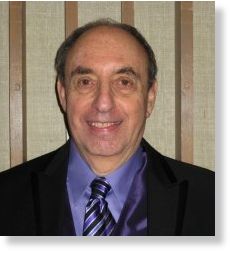


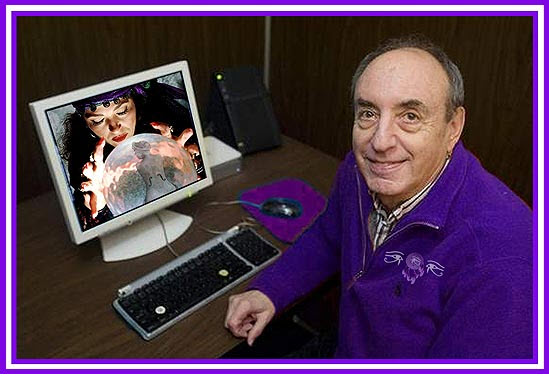

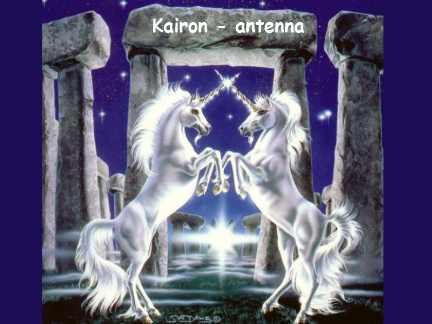
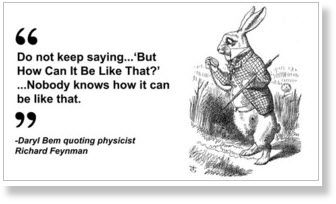
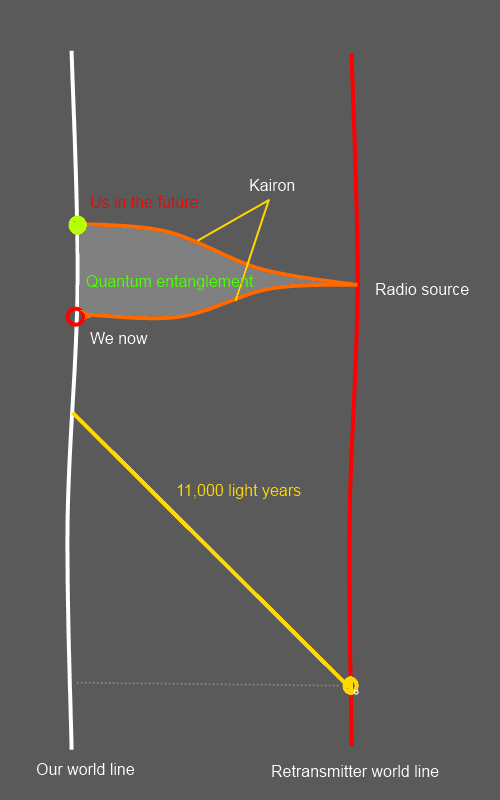
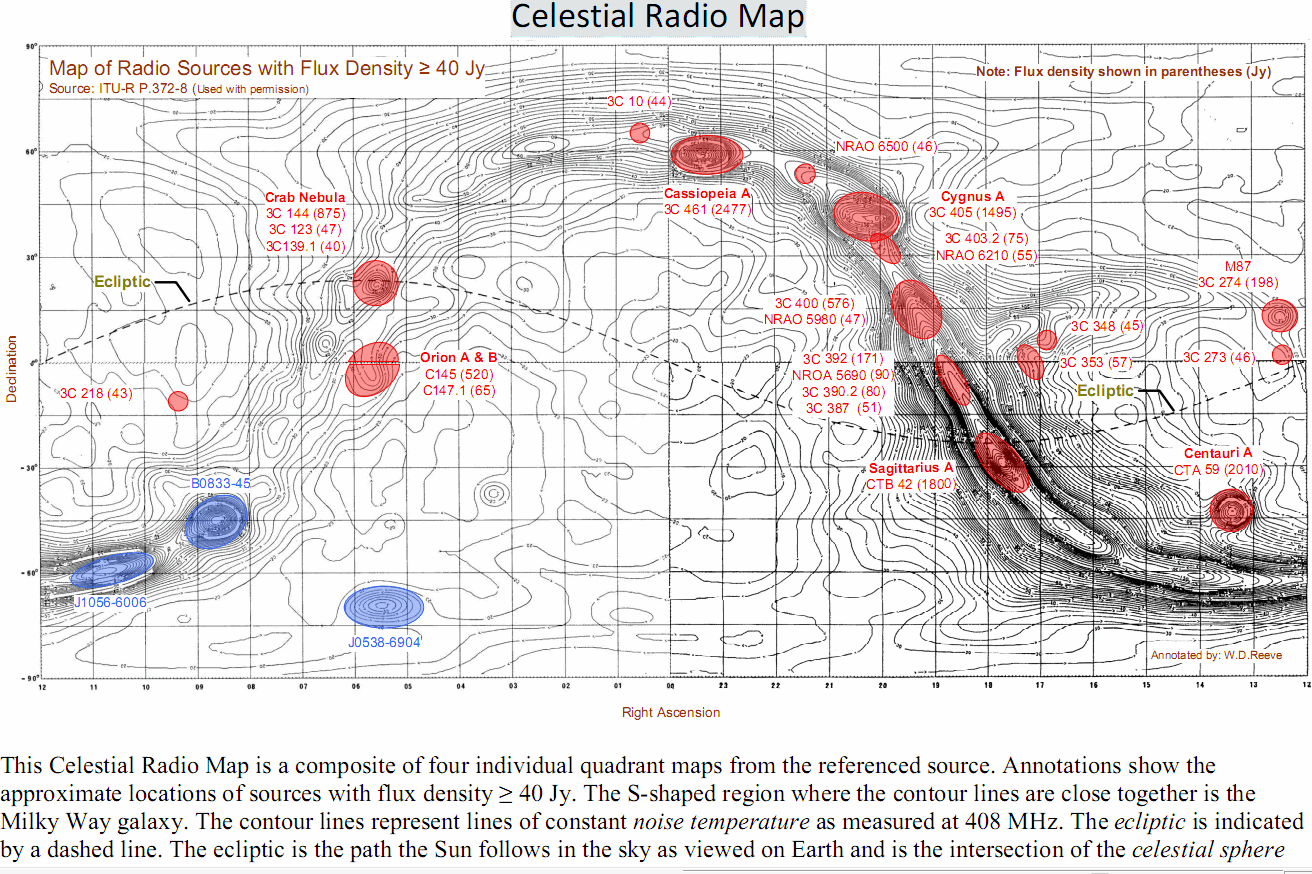
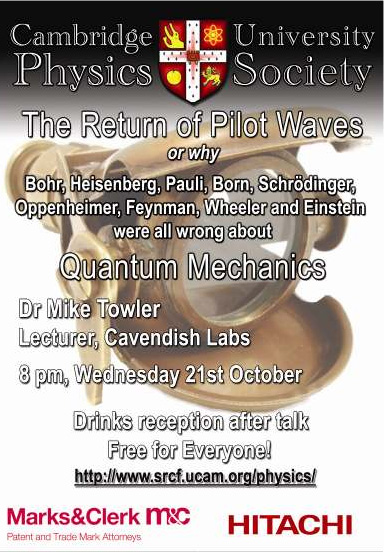



If I understand right - I can speak with my self from the future , being in the present ?! And what about the past ?